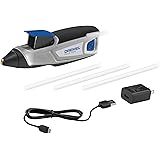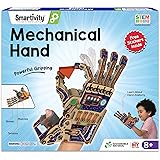Crafting Your Own Homemade Cleaning Products: Easy DIY Solutions for a Cleaner Home
Have you ever found yourself gazing at the overflowing shelves in the cleaning aisle, feeling a mix of confusion and dismay over the endless options and their often-hefty price tags? Or perhaps you’ve been searching for ways to reduce the chemical footprint in your home, seeking gentler yet effective alternatives? Many individuals are discovering the profound benefits of creating their own homemade cleaning products, embracing a more economical and environmentally conscious approach to household chores. As Melissa highlights in the video above, there’s a growing interest in these DIY cleaning solutions for a variety of compelling reasons, from saving money to fostering a healthier living environment.
The journey into DIY cleaning does not mean abandoning all store-bought options; rather, it’s about finding a balance that works for your household. The convenience of commercial products is undeniable, but the empowerment that comes from understanding the ingredients in your cleaners and tailoring them to your specific needs is incredibly rewarding. This guide is designed to complement the valuable insights provided in the video, expanding on the essential ingredients and simple recipes that can transform your cleaning routine. Preparing your own cleaning solutions can be surprisingly simple, utilizing common household items that are often overlooked.
Essential Ingredients for Your DIY Cleaning Arsenal
Before diving into specific recipes, it is helpful to understand the core ingredients that form the backbone of most effective homemade cleaners. Each component plays a unique role, offering distinct cleaning properties that can be harnessed for various tasks around the house. Knowing how these elements work can empower you to experiment and create even more specialized solutions. These versatile ingredients are typically inexpensive and readily available, making them perfect for budget-friendly cleaning.
Dishwashing Liquid: The Gentle Workhorse
Regular dishwashing liquid, regardless of brand, is considered a pH-neutral cleaner, meaning it is neither overly acidic nor excessively alkaline. This characteristic makes it incredibly versatile and safe for a wide array of surfaces without the risk of damage. Its primary function involves breaking down grease and grime, acting as a surfactant that reduces the surface tension of water, allowing it to lift and wash away dirt more effectively. Whenever a recipe calls for warm soapy water, dishwashing liquid is the ingredient being referred to, providing gentle yet powerful cleaning action for general messes.
Vinegar: The Natural Descaler and Deodorizer
White vinegar is a powerhouse in the world of natural cleaning, primarily due to its acetic acid content. This mild acid is particularly effective at dissolving mineral deposits, making it an excellent descaler for hard water stains and soap scum. Beyond its descaling capabilities, vinegar is also known for its deodorizing properties, neutralizing unpleasant odors rather than just masking them. While it offers mild disinfectant qualities, it is most celebrated for its ability to cut through grease and leave surfaces sparkling, making it a staple for eco-friendly cleaning.
Rubbing Alcohol: The Trusty Disinfectant
When it comes to disinfection, rubbing alcohol is an indispensable component of DIY cleaning products. The magic number for effective disinfection is an alcohol concentration of 65% USP or higher; the video specifically notes that 70% is perfectly suitable. At this concentration, isopropyl alcohol can denature proteins, effectively killing bacteria and viruses on surfaces. It evaporates quickly, leaving virtually no residue, which is ideal for electronics and surfaces where moisture might be an issue. Always ensure proper ventilation when using rubbing alcohol, as it can be quite potent.
Hydrogen Peroxide: The Natural Brightener and Stain Fighter
Hydrogen peroxide is often seen as a gentler alternative to chlorine bleach, offering similar whitening and brightening properties without the harsh chemicals. Its oxidative action helps to break the bonds between dirt and surfaces, lifting stains and refreshing dull areas. This ingredient is particularly useful for tackling stubborn stains and can even assist in mild disinfection, similar to oxygen bleach or Borax. Many people appreciate hydrogen peroxide for its ability to whiten fabrics and remove yellowing, proving its versatility beyond just stain removal.
Baking Soda: The Abrasive and Odor Absorber
Baking soda, or sodium bicarbonate, serves as an excellent wingman for nearly any homemade cleaning concoction. Its fine, crystalline structure provides a mild abrasive quality, allowing it to gently scour surfaces without scratching them. This natural abrasion is perfect for tackling baked-on food or grime, replacing harsher powdered cleansers. Additionally, baking soda is a renowned deodorizer, capable of absorbing and neutralizing odors rather than simply masking them. It can be sprinkled directly onto surfaces before spraying with a liquid cleaner, creating a powerful scrubbing paste.
Essential Oils: For Scent and Added Properties
While not strictly necessary for cleaning efficacy, essential oils can significantly enhance your homemade cleaning solutions. They provide a pleasant natural fragrance, masking any residual smells from ingredients like vinegar. Beyond scent, many essential oils possess their own beneficial properties; for example, lavender is known for its anti-mildew and antibacterial qualities. Adding about 10 drops per bottle is generally sufficient to impart a noticeable aroma. Always research the specific properties of essential oils to find ones that best suit your cleaning needs and personal preferences, remembering to prioritize safety in their use.
Simple Homemade Cleaning Recipes to Try Today
With these foundational ingredients in hand, crafting effective and economical cleaning solutions is surprisingly straightforward. The recipes shared in the video and expanded upon here provide a fantastic starting point for anyone looking to reduce their reliance on commercial products. These DIY cleaning products are not only effective but also allow for greater control over the chemicals introduced into your home. Remember to label your bottles clearly with the contents and date of creation, as homemade solutions typically have a shelf life of about two months.
Sparkling Glass Cleaner (Vinegar & Water)
Achieving streak-free windows and mirrors can be quite simple with this classic combination. A mixture of 50% white vinegar and 50% water creates an incredibly effective glass cleaner. The acetic acid in vinegar works to dissolve mineral deposits and residues, which are often the culprits behind streaks. This solution is gentle enough for all glass surfaces, including windows, mirrors, and glass tabletops. For best results, it is suggested that a microfiber cloth or even old newspaper be used for application and buffing, ensuring a brilliant, clear shine every time.
Powerful Stain Remover (Hydrogen Peroxide & Dish Soap)
Battling stubborn household stains can be a frustrating experience, but this potent blend offers a reliable solution. Combining two parts hydrogen peroxide with one part dishwashing liquid forms an excellent pre-treater for almost any household stain. The hydrogen peroxide works to oxidize and break down the stain, while the dish soap helps to lift it from the fabric or surface. This mixture can be applied directly to the stain, allowed to sit for a short period, and then blotted or rinsed away. It is always wise to test this solution on an inconspicuous area first, especially on delicate fabrics, to ensure colorfastness.
Effective Disinfectant (Rubbing Alcohol & Water)
Maintaining a hygienic home, especially in high-traffic areas like bathrooms and kitchens, is crucial. A simple disinfectant can be created by mixing 50% rubbing alcohol (at least 65% USP) with 50% water. As mentioned, the alcohol content is key for killing germs, making this solution ideal for sanitizing cutting boards, countertops, and even electronic devices. Its quick-drying nature leaves surfaces clean and germ-free without excessive moisture. Regular use of this DIY cleaning product can help reduce the spread of common household bacteria and viruses, contributing to a healthier environment.
Grease and Soap Scum Remover (Dish Soap & Vinegar)
The persistent challenge of grease buildup and stubborn soap scum in bathrooms and kitchens can often be addressed with this dynamic duo. A 50% dishwashing liquid and 50% vinegar solution creates an amazing degreaser and soap scum remover. The dish soap cuts through oily residues, while the vinegar’s acidity dissolves mineral deposits and soap film. This powerful combination works wonders on tiled surfaces, shower doors, and sinks, literally watching the grease, grime, and soap scum melt away. Spraying it on and allowing it to sit for a few minutes before scrubbing can make a significant difference.
Versatile All-Purpose Cleaner (Dish Soap & Water)
For everyday cleaning tasks, an all-purpose cleaner that is both gentle and effective is invaluable. Simply adding two tablespoons of dishwashing liquid to a bottle of water yields a fantastic all-purpose solution. This mixture can be used for general dusting, wiping down countertops, and cleaning various surfaces throughout the house. Its mild formulation makes it safe for frequent use, and it’s an excellent go-to for quick clean-ups. Having this easily replenishable homemade cleaner on hand streamlines daily tidying, proving that complex cleaning doesn’t require complex ingredients.
Tips for Storing Your Homemade Cleaners
Proper storage of your homemade cleaning products is just as important as the mixing process itself. It ensures their effectiveness and prolongs their usability. Each bottle should be clearly labeled, detailing the contents and the date it was made. This practice allows you to keep track of freshness and avoid using expired solutions, as homemade cleaners do not contain the same preservatives as commercial products. A shelf life of approximately two months is typically expected for these DIY concoctions, so making smaller batches can prevent waste.
Using a variety of bottle shapes, colors, or even distinct labels, as shown in the video, can prevent confusion when selecting a product for a specific cleaning task. For example, using a unique spray bottle for glass cleaner and another for disinfectant can make your cleaning routine more efficient. These simple organizational strategies contribute to a safer and more streamlined cleaning experience. Adopting these habits ensures that your efforts in creating DIY cleaning solutions are both sustainable and successful.







